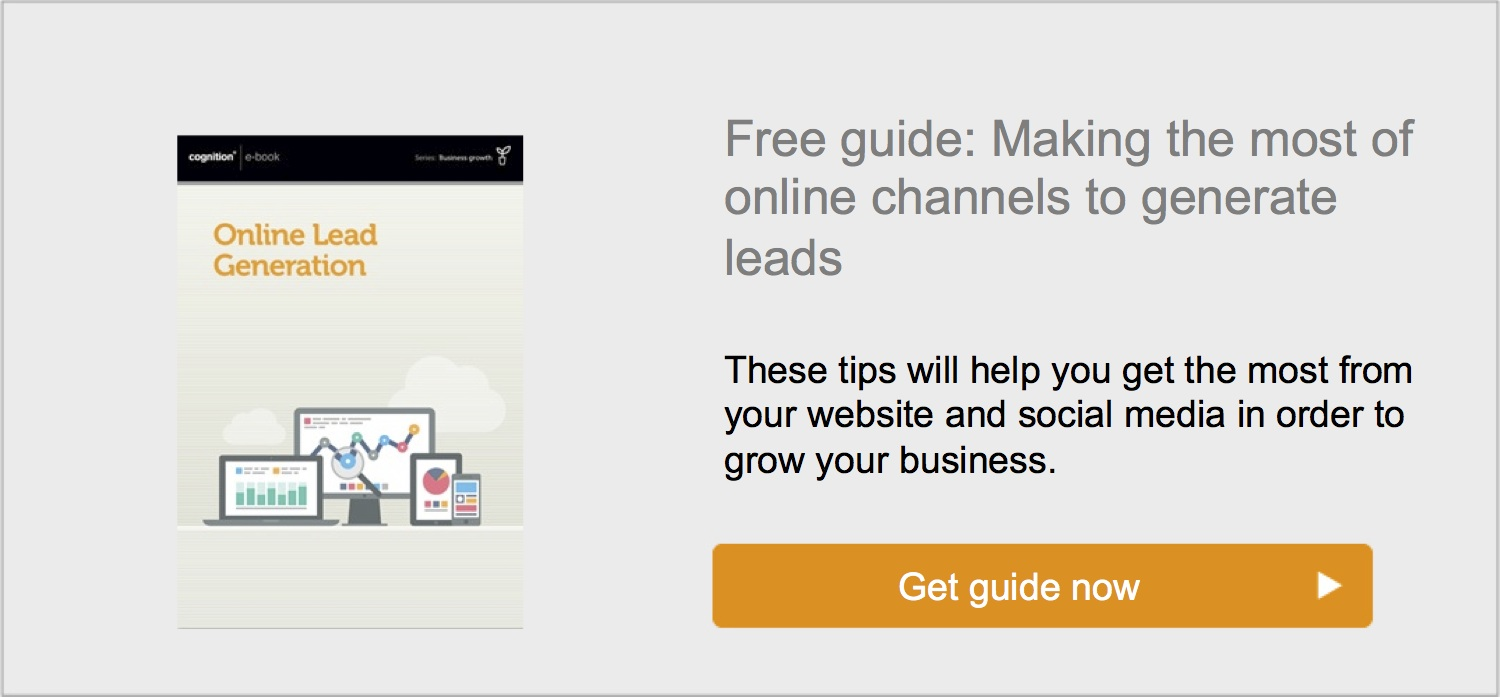|
If you’re a regular reader of our blog, you’ll have probably noticed by now that there’s one phrase we often refer to and that’s ‘buyer personas’. But what are they and how can focusing on them help contribute to your business growth? Before we delve into the finer details, here’s a definition of what buyer personas are according to marketing automation platform, HubSpot: ‘Buyer personas are fictional representations of your ideal customers. They are based on real data about customer demographics and online behaviour, along with educated speculation about their personal histories, motivations and concerns.’ |
Basically, buyer personas are your target audiences. Be it purchasing managers, managing directors, marketing directors or financial directors, they’re the people involved in making the purchasing decision. Research by Forbes has revealed that 5.4 people on average are involved in B2B buying decisions. And, according to MarketingSherpa, one B2B firm increased its leads by 124% after tailoring its content to segments of its audience.
Why should you care about them?
Creating your buyer personas and mapping their customer journeys will ensure your content:
- Appeals to your target customers
- Is relevant to their needs
- Helps them along with their purchasing decision
- Is written in the right tone of voice
With 61% of global internet users searching products online (Interconnected World), being able to tailor your content to your personas’ needs will ensure you’re giving them the information they’re looking for and, more importantly, they feel comfortable from buying from you.
How are buyer personas created?
By doing your research. This involves interviewing your sales team, customers and prospects to form a detailed picture of your personas (note – you’ll most probably have more than one).
There’s no hard and fast rule as to how you collate your information, however, many businesses employ a combination of tactics, including carrying out short interviews, sending out surveys and conducting their own research.
The key is to obtain two types of information: (1) demographic (that’ll enable you build up a picture of your personas’ personalities) and (2) psychographic (that’ll help you understand their process when it comes to making a purchase).
What type of information needs to be gathered?
The more informed you are, the greater your chance of creating a clear picture of your target audience. You can then use this insight to tailor your content according to your different personas, their main priorities and depending on where they are in the sales funnel.
We’ve mapped out the information we look for when carrying out buyer persona exercises with our clients. This is by no means an exhaustive list, but it should provide you with a good starting point:
BACKGROUND
Get a feel for the role and where they fit in their organisation by asking questions such as:
- What’s their job title and level of seniority?
- What type of company do they work for? (Sector, size, turnover)
- What’s their educational and career history?
DEMOGRAPHICS
- Are they male or female?
- How old are they?
IDENTIFIERS
- What makes them tick?
- What’s their buying style?
- What’s their demeanour like? Are they calm and collected or frantically busy and constantly on the go?
GOALS, CHALLENGES AND PAIN POINTS
- What are their main goals, challenges and pain points?
HOW DO YOU HELP
- How do you help each of your personas overcome their challenges and pain points and achieve their goals?
COMMON OBJECTIONS
- What are the common objections your personas will raise during the sales process?
- What things would derail the decision making process, or mean you don’t get chosen?
MARKETING MESSAGES
- Given the above, how do you describe your solution to each of your personas?
By asking these types of questions you’ll be in much more of a stronger position to make clear distinctions between each persona. You can then focus on these profiles when drafting your content, be it blogs, white papers, eguides, eshots or website copy, to ensure everything is tailored to their needs and relates to where they are in the sales cycle. (For details of mapping your content according to where your customers are in the buying process read our blog, (‘What does a successful content plan REALLY look like?’)
Have you identified your buyer personas? How do you help them overcome their pain points or challenges? Are your offers aligned according to where your personas are in the buying process?
The Ask Me Anything series
Have basic questions about marketing? We’ve been helping SMEs with marketing for more than 10 years, and have decades of experience across our team. In our Ask Me Anything series, Cognition’s experts answer common questions our clients have posed over the years.






